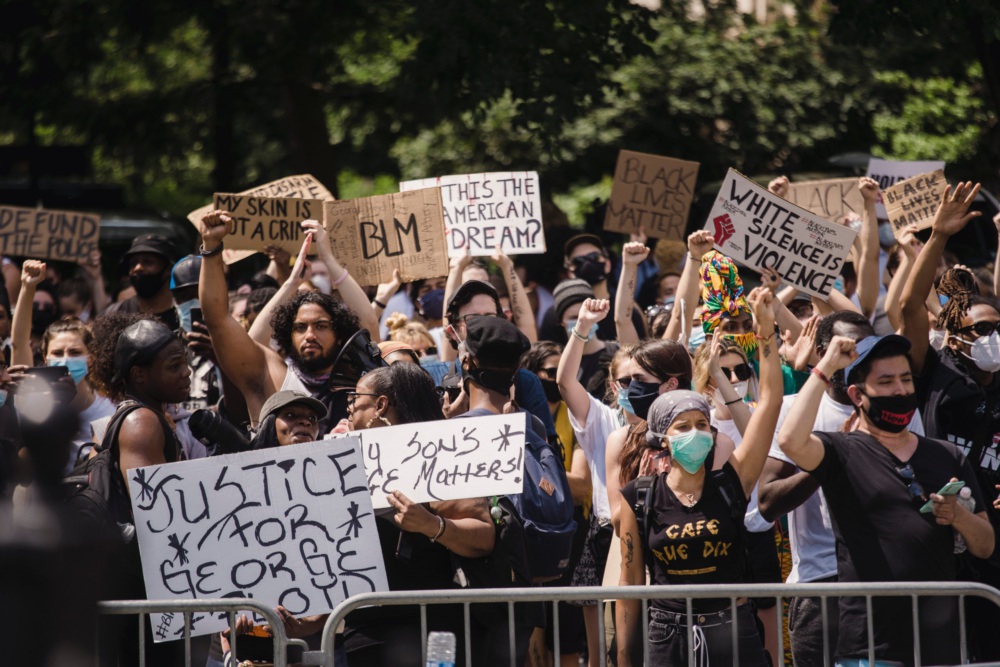Police Brutality in Rochester Proves that Police ‘Reform’ is a Myth
February 9, 2021

February 9, 2021
![]()
Last month, police in Rochester, New York pepper sprayed, manhandled, handcuffed and arrested a nine-year-old Black girl in obvious mental health crisis. This horrifying violence triggered a familiar and morbid routine: news coverage of this police brutality was met with strongly worded condemnations from political leaders, whose calls to reform policing were centered in the conversation; meanwhile the voices of activists and organizers-who correctly identified that this senseless violence is inextricable from our carceral state-were ignored.
As each day passes, the public narrative will increasingly focus on what (if any) repercussions the individual officers will face. The public discourse will neglect any broader conversation around the brutality at the root of our criminal legal system-which regularly reproduces these acts of violence, primarily against Black and Brown people, both in public and out of sight. It is past time that we recognize there is no reforming these institutions.
It is not simply their violent response to a child’s cry for help that makes them the poster child for abolition, it’s that Rochester police have already had gone through virtually every liberal reform imaginable: bodycams, banned chokeholds, police oversight commission, hiring of Black woman as chief, de-escalation training and the establishment of a special unit to respond to mental health crisis. None of these reforms fundamentally changed Rochester police.

Credit: Life Matters
Arguments for reforming the police instead of abolishing them are predicated on several false premises, most prominent among them that police are central to public safety and the institution of policing can be fixed through a series of slight modifications. Even good faith participants in this debate argue that reforms like hiring more Black officers, anti-bias/anti-racism training, de-escalation training and banning chokeholds or other stops on the way to lethal force will make significant enough change for communities ravaged by generations of racist and predatory policing.
Calls to ‘Defund the Police’ have not resulted in substantive changes.
Reformists also offer their version of defunding the police, which involves shifting a small portion of police funding to social services or to community groups in order to allow them to have agency over how their safety is defined. Instead of viewing this as a fundamental step towards creating the world where police are not necessary, this reformist version envisions the permanence of policing and accepts these minor tradeoffs in order to maintain their long-term power and control over low-income communities of color.
What about starting a movement to defund the police in Rochester? Rochester’s local organizers, Free the People Rochester, along with a broader coalition, called for a 50% reduction in police funding as a starting point in June 2020. They even won the support of a local politician, who claimed that Rochester spends more on policing than it does on schools, libraries, and youth services combined. Organizer Stanley Martin noted that Rochester spends 39% percent of its budget on policing even though 86% of all crimes reported in Rochester are misdemeanors and only 7% are violent crimes.
In spite of this data, and in the middle of the nation’s largest sustained protest against policing’s inherent violence since the Ferguson Uprising, the City of Rochester voted to do almost nothing. They approved a budget that cut the next police recruiting class in half, but gave that money to the police for “plans of revamped policing.” Additionally, they moved $130,000 to staff recreation and youth services. None of this resulted in meaningful change.
Furthermore, we now know that the police, the City of Rochester, and its lawyers were working together to suppress public information about the police killing of Daniel Prude in March 2020 in the middle of these budget discussions. Even though Prude’s brother called police and told them he was in crisis, police showed up and used force against him. Prude, who was unarmed and naked, was slammed to the ground while police put their knee in his back and forced his head into a “spit hood”, which made it impossible for him to breathe. He died a week later. The medical examiner ruled his death a homicide. Neither the public nor the City council knew this when they voted on the issues.
After police killed Daniel Prude, City officials followed the textbook response to the overwhelming proof of uncontrollable police violence, this time caught on video. The police demonized Prude, the City of Rochester denied responsibility and their lawyers refused to provide information to the public. They did everything in their power to ensure that the public knew as little as possible about their indifference to Black life that led to the death of Daniel Prude, a forty-one-year-old Black man.
When this information was finally made public after litigation, the people of Rochester protested for transformational change. Not satisfied with using extreme violence against a naked, unarmed man in the middle of an obvious mental health crisis, the Rochester police brutalized protesters who dared to speak out against state sponsored killings and the subsequent efforts to cover it up.
Following the protests, the City of Rochester adopted the entire panoply of ineffective reforms listed above: bodycams, banned chokeholds and a police oversight commission. A few cops were fired and the City hired a Black woman as chief. The most serious change, however, came when the City of Rochester established a new unit specifically designed to address mental health crises that would be outside of the police department. The mayor announced the start of the new program on January 21, 2021.
In spite of this new program, Rochester police responded to a call for a “family disturbance” with 9 cops in full body armor, pepper spray, handcuffs, guns and batons. These heavily armed people came into contact with a crying nine-year-old girl who was screaming for her father. They forcibly restrained this child and shoved her into the police car, telling her that she was “acting like a child” to which she responded, “I am a child.”
Predictably, the police union defended the behavior of the cops, as it did following Daniel Prude’s death, and when the mayor announced she was suspending the police officers with pay during an investigation, she pointedly noted that she could do no more because of the union contract.
Even when a police department like the City of Rochester’s has been caught on video twice within a single year violently assaulting unarmed Black people who posed no threat to anyone, the City, the police union and the leadership will unite to maintain police legitimacy.
Nothing short of police abolition will end the continued abuses of a system of policing designed to systematically oppress Black people, maintain a white supremacist status quo and sometimes profit financially in so doing. The Rochester police are not unique; they are just the latest example.
